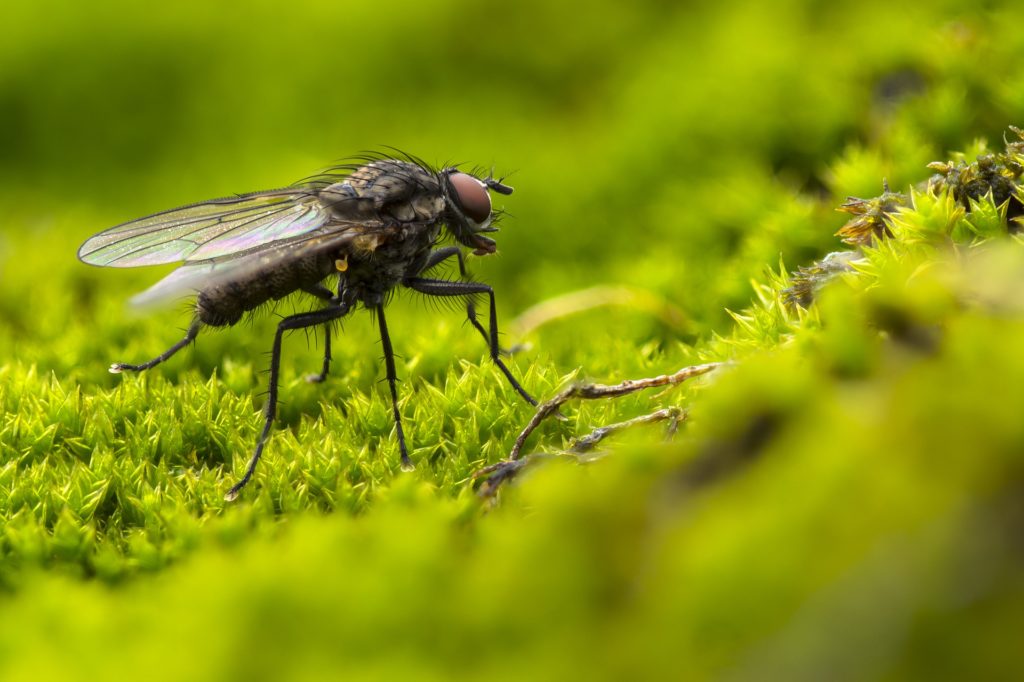Why do flies buzz?
by Scott Dutfield · 02/09/2020
It’s this persistent hum that alerts us to their presence, but what makes these tiny insects fly with such a racket?

You’ll usually hear them before you see them. Acting as a warning seconds before appearing in front of your face, flies carry a distinctive, high-pitched buzz that resonates as they fly. Equipped with wings, flies are able to occupy niche environments out of reach of flightless life forms.
Small in comparison to the world’s other airborne animals, these insects need to move their delicate wings at rapid speeds. The flapping you hear when birds fly is replaced with a much higher pitched buzzing noise. Able to trap significantly less air under their wings having little surface area, a quicker movement is needed to keep their bodies in the air.
What is the purpose of a fly buzzing during this process? It appears that this noise is simply a by-product of the energy exerted in flying, but for some species of fly there is more to their buzz. Whether it’s a form of communication or an escalating warning signal – as seen in hoverflies when danger encroaches – some insects have more control over these persistent sounds than it may appear.
Fly anatomy
The body of this fruit fly is engineered to help it take flight, produce vibrations and detect the sounds of others
Thorax
In some flies the middle section of a fly, known as the thorax, constantly vibrates during flight. These flies bypass the method of contracting specific muscles attached to the base of the wings and instead shake the entirety of the wider area.
Hearing
As well as producing this buzzing noise, flies can hear the vibrations of other flies. Flies such as the fruit fly and mosquito detect noise through the vibrating movement of their antennae hairs.
Connected structure
The thorax is linked to the base of the wings. When the body of the fly contracts, the connection causes the wing base to flutter in sync.
Fast flappers
Most flies can flap their wings at speeds of 200 cycles per second. Fruit flies beat their wings once every four milliseconds due to their tiny size.
Beating the buzz
To generate the buzzing, flies’ wings knock together. The speed at which their wings move determines the frequency of sound waves and the
pitch released.Positive vibes
When flies buzz they gain a positive electric charge. When in the presence of static charges, such as from a plastic container, wing movements are disturbed, resulting in an imbalance of chemicals in their brains.
This article was originally published in How It Works issue 137, written by Ailsa Harvey
For more science and technology articles, pick up the latest copy of How It Works from all good retailers or from our website now. If you have a tablet or smartphone, you can also download the digital version onto your iOS or Android device. To make sure you never miss an issue of How It Works magazine, subscribe today!




